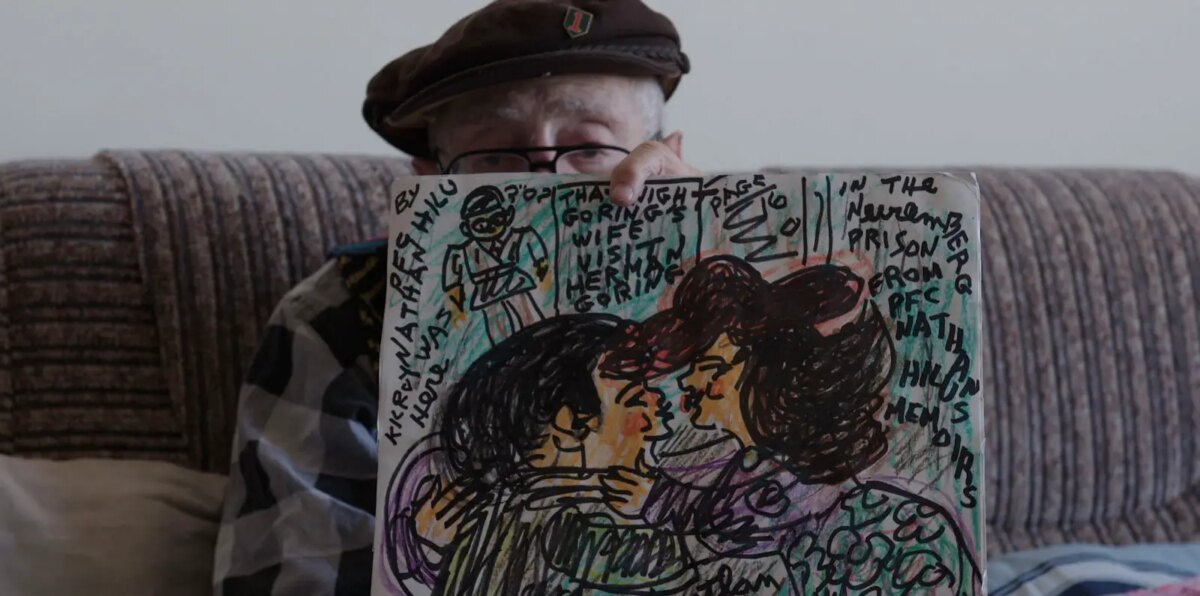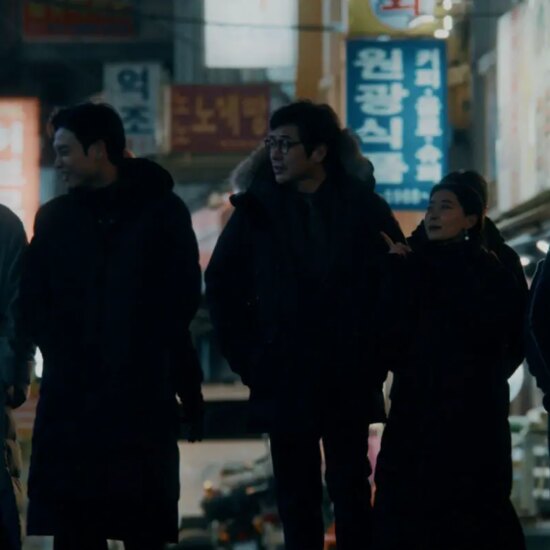
What makes Nathan Hilu charming is his eccentricity: “In art, there’s all kind of isms,” he says in a quintessential New York rasp. “There’s futurism, impressionism… this is Nathan-ism.” Indeed, director Elan Golod’s Nathan-ism is an eccentric film in its own right. On the surface, it is a documentary about the titular Jewish artist and WWII veteran. But intersecting like scribbled lines below that veneer are considerations of history, memory, and personal expression. The film faithfully follows those intersections, endeavoring to glean from them a central truth. And much like a child’s drawing, the result is something interesting but unfocused.
At 91 years of age, Hilu is a guru-like figure. Slumped from age and clad in thick glasses and suspenders, he strikes as a combination of Woody Allen and Art Spiegelman. It is not surprising, then, that Hilu’s storytelling is as neurotically entangled as Allen’s Vicki Christina Barcelona, nor that his art is as emotionally charged as Spiegelman’s Maus. But the heart of the subject’s charm undoubtedly stems from his life story. During the Nuremberg Trials, he guarded some of the highest-ranking members of the Nazi Party, including Hermann Göring and Albert Speer.
Nathan-ism succeeds mainly in how it navigates the disparate strands of Hilu’s wartime stories, all of which are told through his artwork. He narrates with the belief of a guru, making everything he’s saying implicitly engaging. The film aids this process by utilizing Hilu’s drawings as a visual re-enactment of his words, bringing them to life like a folk tale. This aesthetic, set against the backdrop of modern New York City and accompanied by imagery of war-torn 1940s Germany, establishes a strong sense of context.
“…Hilu’s wartime stories…are told through his artwork.”
Further, because of Golod’s studious manner, the audience is frequently given tiny peeks into the interconnected worlds of art history and historical verification. This, in turn, helps explore the nature of memory and reveals how artistic expression is as vital to the human condition as the rationality of that expression.
However, of the many “worlds” Nathan-ism visits, it often foregoes decisive insight for something resembling conjecture. When the potentially amateurish quality of Hilu’s work is discussed, for example, the film stops shy of coming to even an approximated conclusion. And when the reliability of Hilu’s memory is questioned, the film nearly abandons practical opinion altogether. Throughout its runtime, the film remains hesitant to offer any concrete perspective, as if doing so might sully Hilu’s legacy. However, the exact opposite holds true. “I did not degrade the Germans. I just told it as it is.”
About midway through Nathan-ism, it is suggested that conclusions on Hilu’s artwork are best left to the observer. As a result, the film itself leaves too much to the viewer’s discretion, rendering its sum as less than its parts. And yet, Hilu’s life and perspective are unique enough to give this film all the impulse it seems to need. His stories are rich with detail and intuition, and even more, the way in which he tells of his adventures and life is worth hearing.














